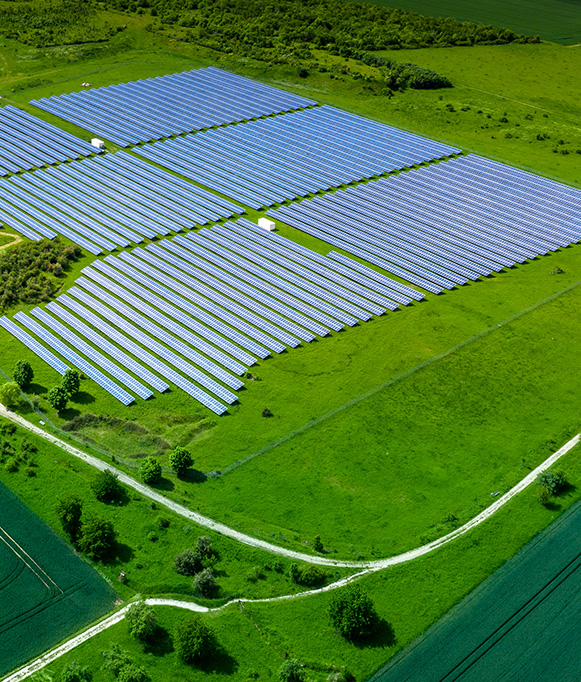Workplan
Smart4RES is a three-and-a-half-year project structured in eight Work Packages and driven by the following strategic targets:
Innovative use cases and forecasting products, data management platform (WP1)
Considering the requirements for future power systems with near-100% RES, the activities in WP1 identify new uses for RES forecasting and gather the data needed in a common data management platform
Improve RES forecasting accuracy in the full model-chain (WP2, WP3)
Refining the quality and availability of NWP regarding variables of interest for RES production and exploring multi-source data including satellite and sky images to improve power forecasts across multiple time horizons
Rethink RES forecasting business models (WP4)
Incentivize an optimal usage of all distributed data, concentrating on privacy-preserving considerations and data marketplaces
Develop decision-aid strategies for different use cases (WP5)
Involving storage and RES that combine uncertainty forecasts (WP3) with data collected from the physical system and/or outcomes from past decisions
Assess RES forecasting value in industrially relevant environment and pilot sites (WP6)
An industrial laboratory test bed is set up to test the predictive tools developed in power system operating scenarios with high RES penetration. The developed market trading algorithms are tested as well. The goal is to simulate various trading decisions in different market environments, e.g. day-ahead, intraday or ancillary services.
Generate lessons learnt to be fed in future scalability of commercial forecasting/decision-aid tools and define a roadmap for RES forecasting tools and enhancement of grid codes.
Finally, WP7 and WP8 will extend the reach and the impact through influencing standards and promoting the results to the industry, regulators and academia.

WP1
Set-up the scene
WP2
Weather forecasting models
WP3
Data science
WP4
Data market
WP5
Decision-aid strategies
WP6
Business cases
WP7
Dissemination
WP8
Project management
WP1 Design of Forecasting Framework and Data Management Platform (ARMINES)
WP1 set the scene for a logical forecasting model-chain that covers the requirements of current and future power systems and electricity markets with near-100% RES. It covers four main objectives:
• Define forecast requirements considering different use cases and end-users, including innovative use cases (to be explored in WP5) tested under pilot conditions;
• Identify new forecasting products (inputs for WP2 and WP3) that are needed in terms of weather forecasting, with emphasis on RES applications and standardization;
• The aim is not to perform measuring campaigns but to take advantage of the wealth of available data and measuring infrastructures. It will also assess how existing data and services platforms need to be upgraded for new data-driven business models (WP4);
• Take advantage of the wealth of data and measurement infrastructure available to perform the different project tasks in a common data management platform (to be used in WP6). Assess how existing data and service platforms need to be upgraded for new data-based business models (WP4).


WP2 Next Generation of Weather Forecasting Models for RES Purpose (Météo-France)
The overarching objective of WP2 is to improve the design of Numerical Weather Prediction (NWP) simulations, as well as the use of satellite and sky-imager observations for short-term forecasts, with the intent to optimally fit the RES-purposes. Focusing on RES relevant atmospheric variables such as wind at hub height and solar irradiance at the surface, this WP aims at refining the quality and availability of forecasts.
This WP aims to:
• Improve forecasting of RES-relevant variables with NWP, satellite and ground based all-sky images;
• Design new ways to use optimally in a RES-context the large amount of data produced by high resolution (e.g. Large-Eddy Simulations) and ensemble NWP systems;
• Optimally use RES data to evaluate, constrain and refine NWP models.
The final TRL in this WP is expected to be 6 in terms of technology maturity.
WP3 Data Science and the future of RES Forecasting (EMSYS)
WP3 involves the improvement of the whole modelling chain, based on modern statistical and machine learning to optimally blend information from sky cameras, satellite images, webcam images, NWP from WP2 etc., within the use cases and requirements defined in WP1. This translates to the following specific objectives:
• Direct evaluation of the benefits brought in by the NWP improvements obtained in WP2, as revealed through power conversion and further post-processing, in particular, for the use cases defined in WP1;
• Developing complementary approaches to blending information from multiple sources of information, e.g. remote-sensing for improved power forecasting;
• Proposing novel approaches towards a seamless view of RES forecasting at various temporal and spatial granularity levels, also in view of input data and information that naturally comes with different resolution and frequency updates.
The final TRL is expected to be between 4 and 5.


WP4 Collaborative Framework to RES Forecasting and Resulting Business Models (DTU)
WP4 main goal is to rethink the current approach to forecasting for RES generation and its associated business models so as to incentivize an optimal usage of all the distributed data that are increasingly being collected. The WP builds on recent advances in distributed, collaborative and privacy-preserving analytics to provide a totally novel framework to RES forecasting. The specific objectives are:
• The proposal of alternative approaches to distributed and collaborative learning and forecasting, considering both communication and computational burden;
• Concentrating on privacy-preserving considerations in distributed learning, to fully respect confidentiality requirements of agents involved;
• Designing and deploying a data marketplace for RES forecasting;
• Analysing new business models for various types of data providers, those who improve their forecasts, and the system as a whole.
For some of these developments the expected TRL is 6, since relying on existing data exchange platforms (EMSYS, DNVGL). In parallel, the development of distributed, collaborative and privacy-preserving analytics relies on concepts of optimization, game theory and cryptography with TRL between 2 – 4.
WP5 Modelling Tools for Integrating RES Forecasting in Electrical Grids, Electricity Markets and Storage Operation (INESC)
The fundamental goal of WP5 is to develop decision-aid strategies (TRL between 2 and 4) for different use cases involving storage and RES that combine uncertainty forecasts (from WP3) with data collected from the physical system and/or outcomes from past decisions. This goal is divided in the following specific objectives:
• Create new use cases for RES uncertainty forecasting, namely the use of RES forecasting with high temporal resolution in FCR and synthetic inertia forecasting, multi-service provision from storage, fully data-driven RES trading, “localized” predictive control algorithms for voltage and congestion management in electrical grids;
• Design human-in-the-loop approaches in order to create knowledge intensive algorithms capable of providing fast advices and assistance to human operators and boost the integration of forecasting technologies;
• Develop model-free methods based on machine learning and/or reinforcement learning that explore available data and avoid modelling the physical system. This approach will ease replication of solutions across different systems and enable continuous improvement from experience.
The final TRL is expected to be between 2 and 4.


WP6 Business Cases Assessing Forecasting Value (EDP)
WP6 aims to test in a relevant industrial environment and at pilot sites the complete model-chain of RES power forecasting in electricity grids and market use cases, as well as to assess the value of the business models defined in WP4. This includes selecting clients, defining a standardized plan for testing and KPI monitoring, and identifying key learnings. The key objectives are:
• Assess the impact that enhanced forecasting may have in the control and management of distribution grids and isolated power systems with very high RES penetration.
The final TRL of these decision-aid tools is expected to be 6 after the validation in industrial test bed and after validation in HEDNO islands;
• Comparison of results from project’s forecasting tools with “production” tools from users.
The expected final TRL is 6 after testing the forecasting tools in EMSYS platform and in the different test cases (e.g., Crete, Rhodes, Astypalea, etc.);
• Define standardized CBA methodologies for assessing RES forecasting value in combination with storage technologies and for grid constraints management;
• Evaluate the results and make a synthesis of the key achievements of the project;
• Define a roadmap for RES forecasting use cases.
WP7 Communication, Dissemination and Exploitation of Results (DOWEL)
The overall objective of WP 7 is to foster communication and dissemination of the project’s results, get feedbacks from external stakeholders as well as to define exploitation routes and pave the way to potential business relationship. The following issues will be addressed:
• To validate a master plan for the communication and dissemination of project results to be used during the project and to perform the dissemination tasks accordingly;
• To define and implement specific dissemination actions;
• To define an exploitation strategy of the project results beyond the EC funded period.


WP8 Coordination and Project Management (ARMINES)
WP 8 aims to ensure an efficient and smooth coordination of the scientific and technical activities as well as the overall administration of the project. The main tasks will consist of:
• Overall project coordination/scientific and technical management;
• Administrative, Financial and Contractual Management;
• Quality Control Procedures / Internal Assessment;
• IPR Management.
Early interactions with future end-users
The Smart4RES Consortium has gathered 17 end-users (industrial members) forming a Reference group that will contribute by providing the consortium with:
• Advice on forecasting requirements in terms of models and applications, end-user challenges and issues and on the exploitation of results;
• Detailed measurements from RES power plants for the evaluation of the Smart4RES models and contribute to their scalability and replicability .

The Advisory Board (AB)
Composed of 9 top experts and/or end-users in the field of the project, the AB will provide the consortium with advice on the orientation and the implementation of the project as well as on support concerning cultural, social, ethical and legal issues to the consortium.
Duration
01.11.2019 – 30.04.2023 // 42 months
Funding program
The project has received funding from the European Union’s Horizon 2020 research and innovation programme
under grant agreement No 864337 Overall budget: € 3 999 915

